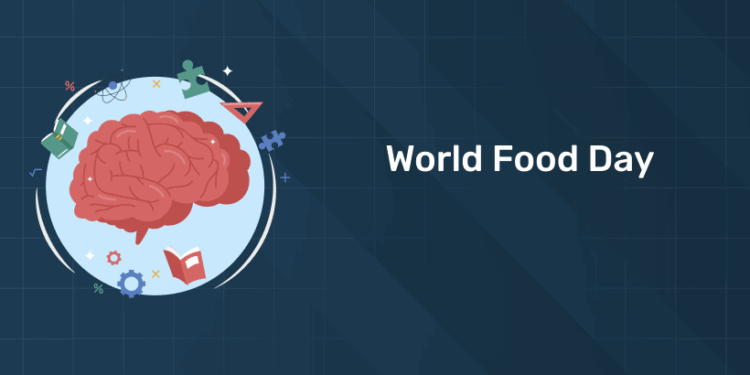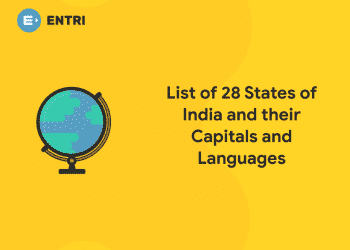Table of Contents
International days serve as vital platforms for raising awareness about pressing global issues, fostering education, and celebrating human achievements. They encourage communities to engage in activities that highlight important themes and drive public dialogue. On October 16th each year, World Food Day invites organizations, governments, schools, and individuals to unite in recognizing the significance of our food systems. This day not only celebrates the diversity and nutritional value of the food we enjoy but also emphasizes urgent solutions to global hunger and poverty. With participation from over 150 countries, World Food Day is a powerful reminder of our collective responsibility to create a world where everyone has access to sufficient, safe, and nutritious food.
In this article, we will explore key insights and initiatives surrounding World Food Day 2025!
World Food Day 2025 Date – October 16
In this article readers can get a glimpse on
- History and Activities of World Food Day
- World Food Day Theme 2025
- World Food Day Quiz
World Food Day
1: Who was the first woman President of India?
World Food Day is celebrated on October 16 every year. It marks the founding of the Food and Agriculture Organization (FAO) in 1945. This day raises awareness about hunger and the need for everyone to have enough healthy food. Each year has a special theme to focus on important food issues. People and organizations hold events to encourage actions that help end hunger and promote better food systems for all.
Free UPSKILLING Courses!
Take your first step toward mastering in-demand skills, acing interviews, and securing top-tier jobs with Entri's free upskilling courses.
Start Learning!History of World Food Day
World Food Day is celebrated every year around the world on 16 October in honour of the date of the founding of the Food and Agriculture Organization of the United Nations in 1945. The day is celebrated widely by many other organizations concerned with food security, including the World Food Programme and the International Fund for Agricultural Development.
World Food Day (WFD) was established by FAO’s Member Countries at the Organization’s 20th General Conference in November 1979. The Hungarian Delegation, led by the former Hungarian Minister of Agriculture and Food Dr Pál Romány, played an active role at the 20th Session of the FAO Conference and suggested the idea of celebrating the WFD worldwide. It has since been observed every year in more than 150 countries, raising awareness of the issues behind poverty and hunger.
World Food Day 2025 Theme
The official theme for World Food Day 2025 is “Hand in Hand for Better Foods and a Better Future.” This theme, which coincides with the 80th anniversary of the Food and Agriculture Organization (FAO) of the United Nations, is a powerful call for global solidarity and collective action to transform agrifood systems.
Key Focus and Meaning
The “Hand in Hand” concept emphasizes that a complex global challenge like food insecurity requires cooperation from every part of society. The theme’s core message focuses on:
- Global Collaboration: It urges governments, international organizations, non-profits, the private sector, researchers, farmers, youth, and consumers to work together across all sectors and communities.
- Transforming Agrifood Systems: The ultimate goal is to reform how food is produced, processed, distributed, and consumed to make them more sustainable, inclusive, and resilient to shocks like climate change, economic crises, and conflict.
- A Food-Secure Future: The desired outcome is a future where everyone, everywhere, has consistent access to a healthy, diverse, and nutritious diet, ensuring no one is left behind.
- The Four Betters: The theme is closely linked to the FAO’s strategic framework, which aims for:
- Better Production
- Better Nutrition
- A Better Environment
- A Better Life
Significance in 2025
The choice of this theme in 2025 is particularly significant:
- FAO’s 80th Anniversary: It marks a major milestone for the founding organization of World Food Day, providing an opportunity to reflect on past achievements and renew commitments for the future.
- Addressing Current Crises: It highlights the urgent need for unity to tackle pressing global challenges, including chronic hunger (which affects hundreds of millions of people), malnutrition, high food loss and waste, and the deepening impacts of climate change on food production.
- Action at Every Level: The theme is a reminder that action is needed from the highest level of international policy down to individual consumer choices, advocating for everyone to become a #FoodHero in their community.
World Food Day Previous Themes
Following are the themes over the past few years:
- 2000: A millennium free from hunger
- 2001: Fight hunger to reduce poverty
- 2002: Water: source of food security
- 2003: Working together for an international alliance against hunger
- 2004: Biodiversity for food security
- 2005: Agriculture and intercultural dialogue
- 2006: Investing in agriculture for food security
- 2007: The right to food
- 2008: World food security: the challenges of climate change and bioenergy
- 2009: Achieving food security in times of crisis
- 2010: United against hunger
- 2011: Food prices – from crisis to stability
- 2012: Agricultural cooperatives – key to feeding the world
- 2013: Sustainable Food Systems for Food Security and Nutrition
- 2014: Family Farming: “Feeding the world, caring for the earth”
- 2015: Social Protection and Agriculture: Breaking the Cycle of Rural Poverty
- 2016: Climate is changing. Food and agriculture must too.
- 2017: Change the future of migration. Invest in food security and rural development.
- 2018: Our Actions Are Our Future, Ending World Hunger by 2030 is Possible
- 2019: Our Actions Are Our Future, Healthy Diets for A #ZeroHunger World
- 2020: Grow, nourish, sustain. Together. Our actions are our future.
- 2021: Safe food now for a healthy tomorrow
- 2022: Leave NO ONE behind
- 2023: Water is Life, Water is Food. Leave No One Behind
Free UPSKILLING Courses!
Take your first step toward mastering in-demand skills, acing interviews, and securing top-tier jobs with Entri's free upskilling courses.
Start Learning!World Food Day Activities 2025
Following are the world food day activities that should be carried out:
- Help the students and the community be aware of the food shortage
- Create awareness to the society to stop the waste of food
- Surveys can be conducted to check on the food wastage at different homes and methods to reduce it
- Many events and projects can be conducted to avoid the wastage of food
- Fundraise and donate to help the needy be served with a one-time meal on this day
- Food exhibitions can be conducted based on different country food items to accept and identify the diversity in the intake of food across the world
- Promote local farming
- Support Agriculture
- Support farmers
- Help the children identify the heroes working behind the production of food
- Plan a farm visit for students and help them learn about different plant species
- An educational tour can be conducted to the local dairy factory to help the students aware of the processing and packaging of food materials
- Appropriate disposal of food waste has to be maintained and the community should be made aware of this too.
World Food Day Quiz 2025
A) FAO
B) WFP
C) WHO
3. Which continent has the highest number of undernourished people?
A) Africa
B) Asia
C) South America
A) Rice
B) Maize
C) Wheat
5. Which nutrient deficiency is a major global health issue?
A) Vitamin A
B) Calcium
C) Iron
A) India
B) China
C) USA
A) WHO
B) FAO
C) WFP
A) High-protein diet
B) Plant-based diet
C) Fast food diet
A) September 16
B) October 16
C) November 16
Want More Engaging Questions?
Download our FREE PDF packed with insightful quiz questions to test your knowledge!
🔽 Click below to get your free copy now! 🔽
World Food Day Quiz 2025 PDF
World Food Day highlights the urgent need to fight hunger globally. It reminds everyone of the importance of food security and nutrition. Governments, organizations, and individuals all play a vital role. Awareness, sustainable farming, and reducing food waste are key actions. Every effort, no matter how small, contributes to a hunger-free world.
The day also emphasizes long-term solutions for food sustainability. Supporting farmers and promoting diverse crops ensures future food supply. Education and community participation strengthen local and global efforts. Collaboration between nations and organizations is essential to tackle hunger. World Food Day inspires action, hope, and a healthier planet for all.
Free UPSKILLING Courses!
Take your first step toward mastering in-demand skills, acing interviews, and securing top-tier jobs with Entri's free upskilling courses.
Start Learning!Frequently Asked Questions
What is the purpose of World Food Day?
World Food Day aims to raise awareness about global hunger. It promotes food security and sustainable agriculture. The day encourages governments and organizations to act. People are urged to reduce food waste and improve nutrition. It is observed globally to highlight these important issues.
When is World Food Day celebrated?
World Food Day is celebrated every year on October 16. This date marks the founding of the FAO in 1945. Events and campaigns take place worldwide. Schools, communities, and organizations participate actively. The day reminds everyone about the importance of food for all.
Which organization established World Food Day?
The Food and Agriculture Organization (FAO) established World Food Day. FAO is a United Nations agency focused on food security. It works to eradicate hunger globally. FAO supports sustainable farming and nutrition programs. The day helps FAO spread awareness about hunger issues.
How many people worldwide suffer from hunger?
Approximately 800 million people around the world suffer from hunger. Many live in developing countries in Asia and Africa. Malnutrition and lack of access to food are major causes. Hunger affects health, growth, and productivity. World Food Day draws attention to solving this crisis.
Which continent has the highest number of undernourished people?
Asia has the highest number of undernourished people. Millions face chronic hunger due to poverty and population growth. Africa also has significant undernourishment issues. Latin America and Europe have comparatively fewer cases. Awareness campaigns target these regions to reduce hunger levels.
What are the main causes of global hunger?
Global hunger is caused by poverty, conflict, and inequality. Climate change and natural disasters worsen food scarcity. Poor infrastructure limits access to nutritious food. Food waste and inefficient farming contribute to the problem. Addressing these causes is key to ending hunger.
What types of crops are most important for food security?
Staple crops like rice, wheat, and maize are crucial. These crops feed billions of people worldwide. Legumes, fruits, and vegetables provide essential nutrients. Sustainable production ensures long-term food security. Diversifying crops helps reduce dependency on a single source.
How can individuals contribute to reducing hunger?
Individuals can reduce food waste at home and work. Donating food or money helps local and global charities. Supporting sustainable farming practices is important. Educating others about nutrition raises awareness. Small actions collectively make a large impact on hunger reduction.
Which organizations help distribute food to vulnerable populations?
The World Food Programme (WFP) plays a key role. FAO provides technical support to improve farming systems. UNICEF addresses malnutrition in children. Local NGOs often support community food programs. Coordination between these organizations ensures effective hunger relief worldwide.
Why is sustainable agriculture important for World Food Day?
Sustainable agriculture preserves soil, water, and biodiversity. It ensures food availability for future generations. Reducing chemical use and promoting organic farming improves health. Sustainable practices help farmers adapt to climate change. World Food Day promotes these methods for global food security.













